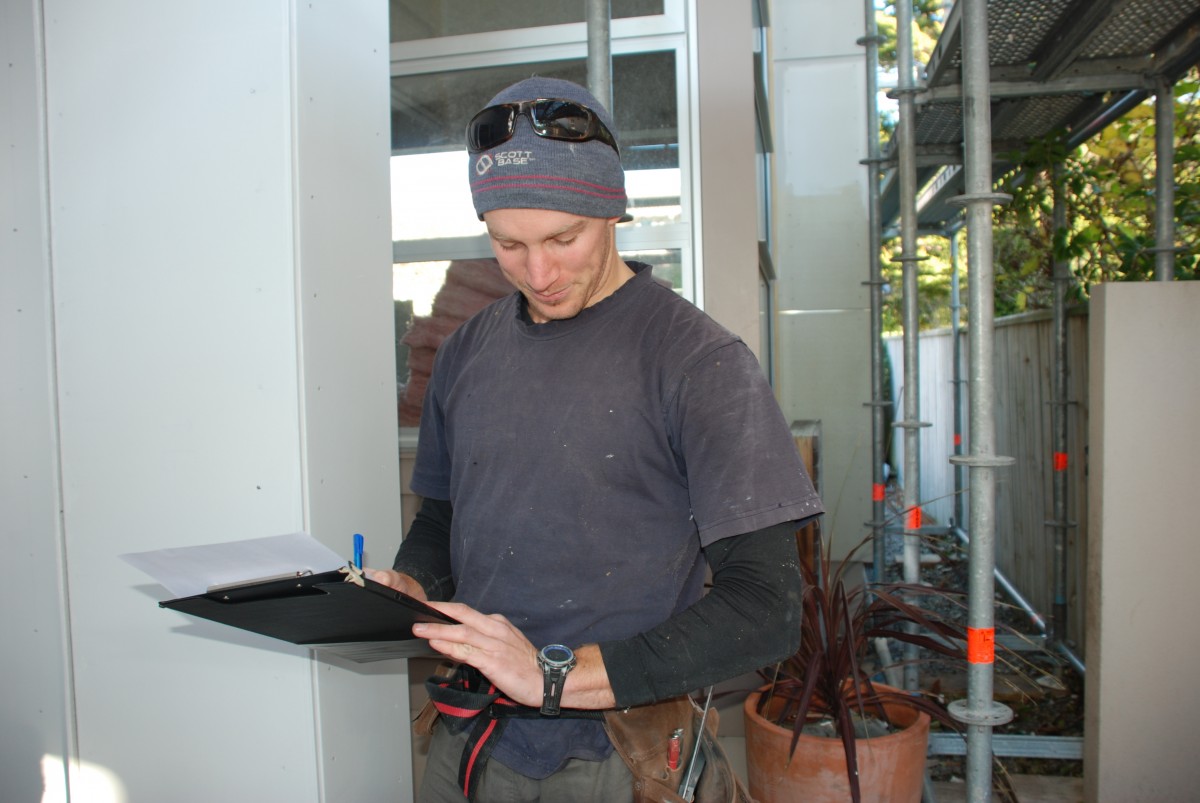ON THE RECORD
20 Nov 2018, Business Tips, Learn, Prove Your Know How

Failing to keep proper site records can lead to hours of expensive arguments, court action or loss of an LBP licence. Avoid the stress and lost time and profit by keeping accurate records of your work
Contractors will know that being called back by a client with questions about the work they’ve done is a regular occurrence. Questions range from anything such as how many coats of paint were used and what the brand was, to asking the builder to fix up a crack or dent in a bench.
Answering such enquiries is a lot easier if you keep good site records with photographs and a site diary. That dent in a bench your customer asked about can be better explained if you are able to show that the bench was fine at handover by presenting the photographs that prove it.
Smartphones or digital cameras can record where framing and in-wall services are while they are still visible. They can also show how a job was done, the materials used and the condition at handover. There are plenty of apps you can use to save and organise the images for clearer site records.
Use a smartphone or camera to record:
- Reinforcing layouts and in-slab pipework.
- Bracing fixing.
- The position of in-wall services.
- The location/depth of service trenches.
- Drains installed behind retaining walls.
- Damaged materials delivered.
- The results of bad weather or vandalism.
Use a site diary to record:
- Phone calls and verbal instructions from the client, designer, building inspector or engineer – record the date, time and what was said.
- When additional drawings were delivered to site.
- Important verbal instructions given to staff or subcontractors, with date, time and person spoken to.
- Contract variations by the project manager, designer or client.
- Material deliveries, including condition – keep delivery dockets! If incorrect or substandard materials are delivered, keep a note of when the supplier was notified and when the materials were replaced.
- Work progress and quality checks.
- Site safety issues (there are very specific requirements around recording site accidents – see www.worksafe.govt.nz).
- Moisture content readings of timber or concrete.
- Problems encountered – incomplete drawings, high winds/heavy rain.
- Site visitors.
- Inspections – who was there, what was inspected and the outcome.
Recording these processes means that you will be able to answer any questions thrown at you. The information will be useful to the building owner and future builders doing alterations – which could well be you!
LBPs and records
LBPs failing to provide appropriate records is a common complaint made to the Building Practitioners Board. By law, LBPs working on Restricted Building Work must complete a Record of Work and provide it to the building owner and the territorial authority.
You should identify what restricted work you have carried out or supervised, even if you didn’t do all of it. You can download a Record of Work form and fill it in on a computer, but you will need to print it out before you can sign and date it.
LBPs also need good site records where on-the-job work forms are part of skills maintenance requirements. Examples include:
- Introductions to a new system, product or way of working.
- Receiving on-the-job training from someone more experienced.
- Doing a job that is new to you, such as fixing claddings in the extra-high wind zone.
© BRANZ ‘Timber Decks – Build magazine supplement December 2013’
Register to earn LBP Points Sign in
3 Comments
Leave a Reply
You must be logged in to post a comment.




Ooooiok
yes
ok